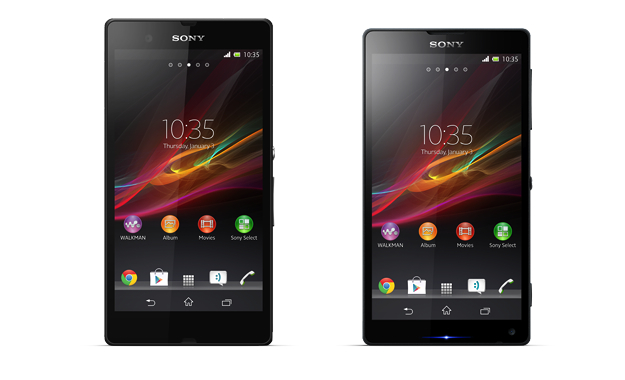 Check out our full reviews of the Sony Xperia ZL and Sony Xperia Z phones.
Check out our full reviews of the Sony Xperia ZL and Sony Xperia Z phones.
Sony hasn’t been able to keep its two new flagship Android phones secret ahead of CES 2013, as a picture of the pair has sneaked out just days before the beginning of the Las Vegas show. The phones are identified as the Xperia Z (seen above on the left) and Xperia ZL, and have previously been leaked as the Yuga and Odin respectively. As both images were discovered on a SonyMobile.com website they’re almost certainly genuine, plus the device names make up part of the URL, so there’s a good chance these will turn out to be correct too.
While both the Xperia Z and Xperia ZL have appeared before, we’re still not sure of the exact specification of either, however it’s possible the Xperia ZL/Odin is a more compact variant of the full-size Xperia Z/Yuga. In the past, the addition of an L in a Sony smartphone model name hasn’t signified anything other than a gentle warm-over of the specs, such as in the case of the Xperia S and Xperia SL, but how this approach would work with two devices launched at the same time remains to be seen.
We’re expecting the Xperia Z to be Sony’s 5-inch, 1080p smartphone effort which will be driven by a quad-core Qualcomm Snapdragon processor – also a first for Sony, after it swore off quad-core chips for 2012. A 13-megapixel camera – as seen on the Xperia T, Xperia TL and its variants – is likely to sit on the rear of the big-screen device, plus we can see a forward facing video call lens on both phones in the new pictures. Oddly, the Xperia ZL’s video call lens is in the bottom right-hand corner of the chassis; a most unusual position. Google Android 4.1 Jelly Bean is the most obvious candidate for the operating system.
So when will we get to see these two new Sony smartphones? The company has scheduled a press conference at CES 2013 for 5pm local time on January 7, and in previous years it has announced several top-of-the-range devices. We’ll be there to bring you all the latest news.
Editors' Recommendations
- Sony’s new Android phone just leaked, and it sounds mighty interesting
- The Xperia 5 IV shows Sony isn’t done making small phones
- Sony’s $1,800 Xperia Pro-I phone shares features with RX100 VII compact camera
- Widescreen Xperia 1 II super phone is full of Sony’s camera and visual expertise



